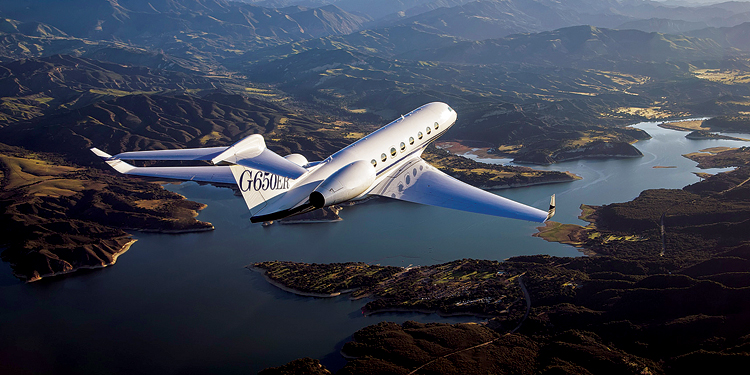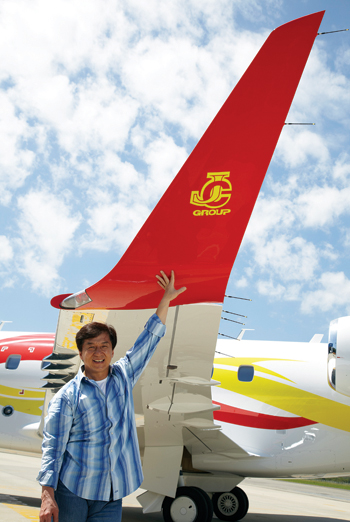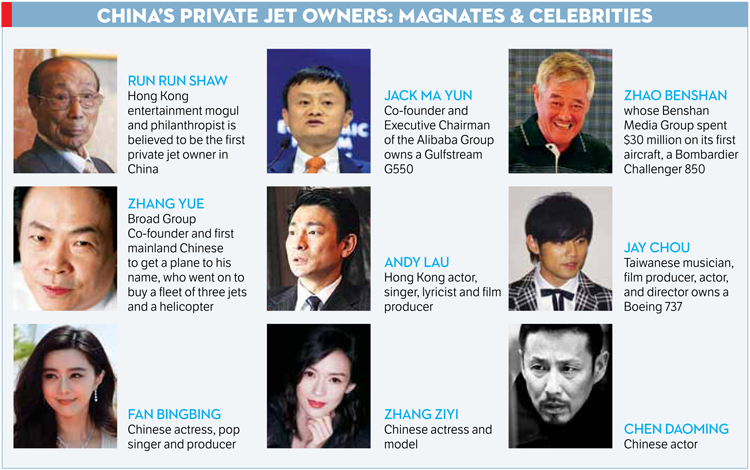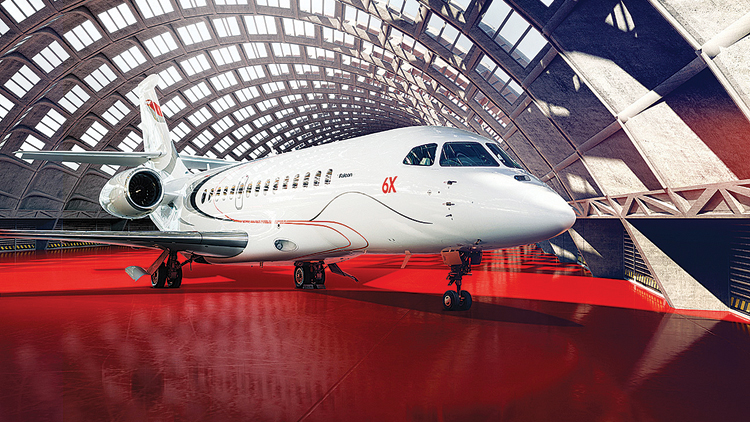INDIAN ARMED FORCES CHIEFS ON
OUR RELENTLESS AND FOCUSED PUBLISHING EFFORTS

SP Guide Publications puts forth a well compiled articulation of issues, pursuits and accomplishments of the Indian Army, over the years

I am confident that SP Guide Publications would continue to inform, inspire and influence.

My compliments to SP Guide Publications for informative and credible reportage on contemporary aerospace issues over the past six decades.
A Story of Tentative Growth
The anti-corruption drive in 2015 did briefly jerk the business jet market in China but further on with the economic boost, the market shows immense promise despite regulatory issues

From being a ‘bicycle country’ to having emerged as one of the largest business jet markets, the People’s Republic of China has come a long way within the span of just two decades since the mid-1990s when business aviation marked its beginning in the country with the launch of its first charted service by Deer Jet, a Hainan Airlines Group arm. Since then, call it the constant rise in demand for business jets among the Chinese buyers or the possibility of growth that the global market players saw, China’s business aircraft fleet reached over 500 last year. The movement with business aircraft has not just increased within the country but also abroad.
Post a few years of economic uncertainty in the country, China’s business aviation market has only been recovering especially since 2017, based on Asian Business Aviation Association (AsBAA)’s data. The President of US National Business Aviation Association (NBAA) also remarked that the business aviation in China is “moving beyond infancy” as the business aviation sector continues to grow with the increasing fleet and flight hours.
DEMAND FOR EXPENSIVE BUSINESS JETS

For the longest time, the market in China was inclined towards the long-range, more expensive business jets due to the high demand. The buyers initially seemed to be of the belief that more the price and larger the jet, the better suited it is. However, with enhanced awareness and knowledge, buyers are now more analytical about the costs, their needs, the offered facilities, and efficiency. With the maturing markets, buyers are maturing too. Being treated as time and efficiency instruments, the executive jets are being better understood by the Chinese consumers who initially only looked for ultra-large jets. Now, the midsize and light-executive jets are being fairly well received for their excellent performance and economic operation. This has also made the country’s business aviation fleet more multi-dimensional with customers being practical and rational in selecting aircraft based on their purpose.
China’s first private aircraft was purchased by an entrepreneur in 2004 and around 2010, the industry began taking off as the focus of Chinese executives shifted towards charter flights being time savers. Business airplanes have proved their coherence and productivity especially in terms of time for individuals, companies and governments across the world. In 2008, there were 32 business aircraft registered in China, with the number reaching to over 100 in 2011, based on statistics from CAAC (Civil Aviation Administration of China).
Now many of the Chinese celebrities own private jets like Gulfstream 450, Bombardier Global Express XRS, Dassault Falcon 7X, Boeing 737, etc. Among many other famous personalities, Alibaba Chairman, Jack Ma Yun owns a Gulfstream 550 accommodating 19 passengers, global actor Jackie Chan has a 14 seater Embraer Legacy 650 private jet while the Chinese musician, Jay Chou owns a Boeing 737 that can seat over 100 people.
The year-on-year two-digit increase that followed China’s business aviation fleet was surprising to say the least. By 2017, China was home to about 330 jet and 250 turboprop business aircraft. A lot of this is due to the large interest of the Chinese buyers in buying expensive business aircraft displaying strong brand preference. Aircraft having big cabins and long range continue as the mainstream of sales and the private owners as well as charted companies that are going more for medium and light business aircraft.
SECOND HAND SURGE
Between 2013 and 2016, the Chinese government’s anti-corruption drive under President Xi Jinping stalled the sales of new jets, almost forcing the wealthy elite to maintain a lower profile. Club One Air’s CEO last year highlighted in a media coverage,“In the last ten years, China suddenly exploded with economic growth, with people having plenty of money to buy jets. During this time, a lot of people in China bought private jets. But in the last two years, the Chinese government has clamped down, making it difficult for businessmen to buy private jets.”

While many attribute the slump in Chinese Business Aviation to this campaign, some see the demand for second-hand jets as the sign of a stronger economy. The country still remains one of the busiest markets for many business jet operators. There has been a gradual shift towards procuring pre-owned jets. In 2017, 39 second-hand aircraft were added by operators in Greater China as compared to 19 in 2016.
AVIATION METEORS FOR CHINA
As the economy progressed, the demand for business jets expanded, also highlighting that these business jets were no more a privilege only for the country’s wealthy elite. The increasing demand also makes room for increased competitiveness and further enhances the efficiency and creativity through new opportunities. However, the road was uphill and not so smooth for the Chinese business aviation industry and had to surpass some major hurdles.
- The shortage of infrastructure has been the foremost concern. However, the government of China has addressed this issue in its 13th Five-Year Plan envisioning 500 new airports by 2020, a significant number from which will also facilitate business aviation. As of now, the high air traffic makes it difficult for business jets to get a landing slot especially at the major airports.
- The lack of pilots and maintenance technicians to support the growing fleet is another significant problem, more so because of the high price of having a license in China. The flight crew is generally required to be Chinese for operational flexibility. Most of these pilots are recruited from the country’s fast-growing airlines, where the overtime opportunities supersede the switch to business aviation. Non-Chinese operators have restrictions when it comes to the number of mainland airports that they can use.
- The restrictive policies of the Chinese government have been another obstacle, especially the lack of flexibility to freely access the airways and airspace with limits on the routes and altitudes. In its 12th Five-year Plan, the central government stated the promotion of general aviation industry and reform the airspace management system.
- While the government continues its conservative approach to monitor the influx, it is also making efforts to let go off these obstacles.
- Despite the industrial growth, management companies with the required Chinese air operator’s certificate are relatively quite low in number. Finding an acceptable company to operate the aircraft is a basic requirement to have a jet established in China as the authorities require it be flown under a management contract. This makes many of the companies operating in China, offshoots of largely state-owned Chinese airlines. The fast-growing aircraft management companies, even the experienced Western-based groups are also increasingly opting for partnership models between Chinese airlines and private companies. This makes it easier for them to receive the required approvals. To operate business jets registered outside China, a special permission is a must from the CAAC as well.
The first generation of business jet owners still faces bureaucratic hurdles when they wish to import their aircraft. To avoid the tedious process of waiting at the ports of entry for release, buyers often choose to have their aircraft delivered as well as registered outside China, but even then operations within the country stay more restricted. The situation is better only for the Chinese-registered aircraft.
POLICIES PAVE THE WAY
While the stringent policies of the Chinese government were hindrances for the most period; the government is easing out with the growing development in the aviation industry and also drafting rules specified to administer business aviation.
In 2009, China had a “One Route, One Airline” policy, specifying that only a single carrier could operate a particular long-haul route. In effect to this, between 2011 and 2017, the international routes frequency to and from China doubled from 443 to 803. From May 2018, the government had been relaxing this policy.
Being treated as time and efficiency instruments, the executive jets are being better understood by the Chinese consumers who initially only looked for ultra-large jets. Now, the midsize and light-executive jets are being fairly well received for their excellent performance and economic operation.
A series of minor rules on flight paths, repair work were also relaxed by the aviation administration in 2017. While in 2010, the administration had issued a document to call out for airspace “liberalisation” under 4,000 metres by 2020.
Similarly, earlier it used to take over a week to have an approval for a private jet flight but now it can be done as quickly as 24 hours, the CEO of Shanghai Easewing Aviation Consultants told the media.

During the economic boom, the priority given to airline operation impacted the business aviation but the government and the wider community eventually came to understand the value of business aviation to the local economy.
KEY PLAYERS
The People’s Republic of China has had a rapid growth in the business aviation sector with both global and domestic business aviation giants establishing themselves. Metrojet, Deerjet, Asia Jet, Air China’s Beijing Airlines, Hongkong Jet and Hainan Airlines subsidiary Beijing Capital Airlines have been among the major emerging players, most of which offer Gulfstream and Boeing charter aircraft.
French aircraft maker Dassault’s sales in China for its Falcon-model aircraft jumped to 50 per cent of its Asia Pacific total. The country has continued to be one of the hottest markets, especially for the Falcon 8X and 7X. Dassault Aviation is all set to showcase its advanced Falcon 8X ultra-long-range trijet at the Asian Business Aviation Conference & Exhibition (ABACE) which opens on April 16, 2019 at Shanghai Hongqiao International Airport.
Reports also highlight American Gulfstream Aerospace’s China fleet having shot up nearly 50 per cent over the past five years to 120. Gulfstream aircraft are known for its luxury and reliability, held 70 per cent of China’s largecabin market share.
The country still remains one of the busiest markets for many business jet operators. There has been a gradual shift towards procuring pre-owned jets. In 2017, 39 secondhand aircraft were added by operators in Greater China as compared to 19 in 2016.
According to Hurun report, Gulfstream was the most popular business jet brand in China and Dassault Falcon 8X was the most popular ultra-longrange business jet award in 2019.
The demand has, however, increased for Boeing Business Jet (BBJ’s) ultra-large business jets as well among Chinese operators who travel long distances with larger teams. 2017 expansion plans for Boeing Business Jets fleet in China included two BBJs, one BBJ2 and one BBJ 787 entering service with two BBJ MAX 8s, delivered in 2018.
With improved marketing and long range aircraft availability, Bombardier is making its presence. In 2016, Embraer made some rather staid deliveries in the form of one midsize Legacy 500 and two light Phenom 300s in the Chinese market, which only shows that the trends are shifting towards more mature purchases in the country.
The emergence of business aviation in China has been a boon not just for the industry but also the economy and the entrepreneurial class. Operators hope further for easier and faster approval of flight plans and better-situated airports but the thoughtful steps being taken up by the government and the immense space for possibility; continue to make China a favourite among the aviation industry stalwarts. Thus, the major aircraft manufacturers continue to roll out plans to upgrade their services and offer products tailored for the Chinese market. Even though economic fluctuations are likely to cast a shadow on the industry, with the major aviation players expanding their base in the Chinese market and the government showing support through the changes in policies, the business aviation industry seems to be at the central point in China.





